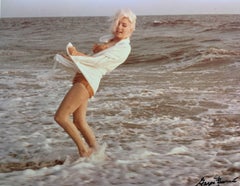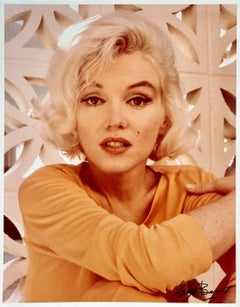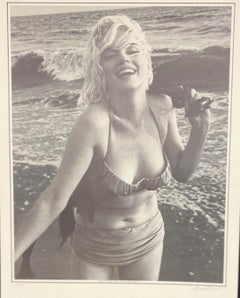George Barris Art
George Barris was born on June 14th, 1922, in Manhattan, New York City. When his brother bought him a box camera for his sixth birthday, he began a lifelong love affair with photography. In addition to his timeless work with Marilyn Monroe, Barris has captured unforgettable images of icons like Steve McQueen, Charlie Chaplin, Marlon Brando, Frank Sinatra, John Wayne, Clark Gable and Elizabeth Taylor.
1960s Modern George Barris Art
Photographic Paper
1960s Modern George Barris Art
Photographic Paper
Mid-20th Century Photorealist George Barris Art
Photographic Paper
1960s Modern George Barris Art
Photographic Paper
1960s Modern George Barris Art
Photographic Paper
1960s Modern George Barris Art
Photographic Paper
1960s Modern George Barris Art
Photographic Paper
1960s Modern George Barris Art
Photographic Paper
1960s Photorealist George Barris Art
Photographic Paper
1960s Modern George Barris Art
Photographic Paper
1960s Modern George Barris Art
Photographic Paper
Mid-20th Century Photorealist George Barris Art
Photographic Paper
1960s Modern George Barris Art
Photographic Film
1960s Modern George Barris Art
Photographic Paper
1960s Modern George Barris Art
Photographic Paper
1960s Modern George Barris Art
Photographic Paper
1960s George Barris Art
Paper
1960s George Barris Art
Photographic Paper
1980s Modern George Barris Art
Photographic Paper
1980s Modern George Barris Art
Photographic Film, Archival Paper, Photographic Paper, Black and White, ...
Early 2000s Modern George Barris Art
Archival Paper, Photographic Paper, Black and White, Giclée, Pigment, Ar...
Early 2000s Modern George Barris Art
Archival Paper, Photographic Paper, Color, Pigment, Archival Pigment, Di...
1980s Modern George Barris Art
Photographic Film, Archival Paper, Photographic Paper, Black and White, ...
20th Century American Modern George Barris Art
C Print, Photographic Paper, Color, Digital
Early 2000s Modern George Barris Art
Archival Paper, Photographic Paper, Black and White, Pigment, Archival P...
1960s Modern George Barris Art
Photographic Paper, Black and White
2010s Photorealist George Barris Art
Photographic Film, Acrylic Polymer, Photographic Paper, Digital, Photogr...
1980s Photorealist George Barris Art
Photographic Paper, Silver Gelatin
1960s Modern George Barris Art
Photographic Paper, Black and White
Early 2000s Modern George Barris Art
Archival Paper, Photographic Paper, Black and White, Pigment, Archival P...
1960s Photorealist George Barris Art
Photographic Paper
Mid-20th Century Photorealist George Barris Art
Photographic Paper
1960s Photorealist George Barris Art
Photographic Paper
1960s Photorealist George Barris Art
Photographic Paper
1960s Photorealist George Barris Art
Photographic Paper
1960s Photorealist George Barris Art
Photographic Paper
1960s Photorealist George Barris Art
Photographic Paper
Mid-20th Century Photorealist George Barris Art
Photographic Paper
Mid-20th Century Photorealist George Barris Art
Photographic Paper
Mid-20th Century Photorealist George Barris Art
Photographic Paper
1960s Photorealist George Barris Art
Photographic Paper
1960s George Barris Art
Paper









